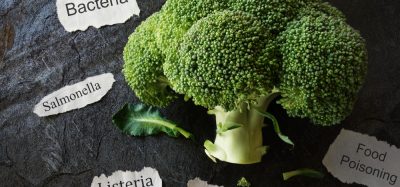EFSA and ECDC zoonoses report: Salmonella in humans continues to decrease, Campylobacter increasing
- Like
- Digg
- Del
- Tumblr
- VKontakte
- Buffer
- Love This
- Odnoklassniki
- Meneame
- Blogger
- Amazon
- Yahoo Mail
- Gmail
- AOL
- Newsvine
- HackerNews
- Evernote
- MySpace
- Mail.ru
- Viadeo
- Line
- Comments
- Yummly
- SMS
- Viber
- Telegram
- Subscribe
- Skype
- Facebook Messenger
- Kakao
- LiveJournal
- Yammer
- Edgar
- Fintel
- Mix
- Instapaper
- Copy Link
Posted: 8 March 2012 | EFSA | No comments yet
EFSA & ECDC have published their annual report on zoonoses & food-borne outbreaks…


The European Food Safety Authority (EFSA) and the European Centre for Disease Prevention and Control (ECDC) have published their annual report on zoonoses and food-borne outbreaks in the European Union for 2010. The report shows that Salmonella cases in humans fell by almost 9% in 2010, marking a decrease for the sixth consecutive year. Salmonella prevalence in poultry is also clearly declining at the EU level. Campylobacteriosis remains the most reported zoonotic infection in humans since 2005 and the number of cases has been increasing over the last five years. This report supports the European Commission and EU Member States in their consideration of possible measures to protect consumers from risks related to zoonoses. “The positive progress in the reduction of Salmonella cases in humans and poultry is continuing and the majority of Member States met the targets set for the reduction of Salmonella in different poultry flocks in 2010,” said Claudia Heppner, EFSA’s Acting Director of Risk Assessment and Scientific Assistance. According to the report, the likely main reasons for the decrease in human salmonellosis cases are the successful EU Salmonella control programmes for reducing the prevalence of the bacteria in poultry populations, particularly in laying hens[1]. Salmonella, which usually causes fever, diarrhoea and abdominal cramps, accounted for 99,020 reported human cases in 2010 compared to 108,618 in 2009. Salmonella was found most often in chicken and turkey meat. Johan Giesecke, Chief Scientist at ECDC, explained: “The increasing trends in human cases of Campylobacter highlight the need of further joint efforts. For this, EFSA and ECDC will continue to strengthen their links with all important partners and foster collaboration in order to decrease the occurrence of these diseases in the EU.” In 2010, a total of 212,064 Campylobacter cases in humans were reported, an increase for the fifth consecutive year with 7% more cases compared to 2009. In foodstuffs, Campylobacter, which can cause diarrhoea and fever, was mostly found in raw poultry meat. In order to combat Campylobacter, the European Commission is currently carrying out a cost-benefit analysis of the control measures for the bacteria at different stages of the food chain. EFSA has supported this work by among others analysing an EU-wide baseline survey on the prevalence of Campylobacter in chicken and providing scientific advice on possible reduction measures. The report also gives an overview of other food-borne diseases. Human cases of Shiga toxin/verotoxin -producing Escherichia coli (STEC/VTEC) have been increasing since 2008 and amounted to 4,000 reported cases in 2010. Among animals and foodstuffs, VTEC was most often reported in cattle and their meat. A decrease for the fifth consecutive year was recorded for human cases of Yersinia enterocolitica, a bacterium mostly found in pigs and their meat, with 6,776 cases reported in 2010. The number of human cases of trichinellosis – a parasitic zoonosis – decreased significantly in 2010 (223 cases compared to 748 in 2009) with a corresponding reduction of Trichinella findings in pigs, an important source of the parasite. Listeria infections in humans showed a slight decrease with 1,601 confirmed cases in 2010. In 2013, EFSA will be analysing the results of an EU-wide baseline survey on Listeria in ready-to-eat foods including smoked fish, heat-treated meat products and soft and semi-soft cheeses[2], which will provide further valuable information on its prevalence and the factors contributing to this in these high-risk foods. To complement this work, EFSA and ECDC will carry out a joint molecular typing analysis for human and food Listeria strains to identify potential links between human cases and food. The report says that 5,262 food-borne outbreaks[3] were recorded in the EU in 2010, slightly less than in 2009. These reported outbreaks affected over 43,000 people and caused 25 deaths; however, these figures may in reality be higher due to under-reporting. The most frequently reported causes were Salmonella (31% of all outbreaks), viruses such as norovirus (15%) and Campylobacter (9%). The most important food sources in the outbreaks were eggs and egg products, mixed and buffet meals and vegetables and derived products. The importance of vegetables as sources of outbreaks increased from previous years. The report covers 15 zoonotic diseases, including Q fever, brucellosis, bovine tuberculosis, rabies and the parasitic zoonoses echinococcosis. The full version of the report with data by country and annexes is available on EFSA and ECDC websites. •The European Union Summary Report on Trends and Sources of Zoonoses, Zoonotic agents and Food-borne Outbreaks in 2010
References
- In accordance with Regulation (EC) No 2160/2003 these control programmes aim at reaching the Salmonella reduction target set by Regulations (EC) No 1003/2005, No 1168/2006 and No 646/2007 covering the following Salmonella types: S. Enteritidis, S. Typhimurium, S. Infantis, S. Virchow and S. Hadar in breeding flocks, and S. Enteritidis and S. Typhimurium in laying hen flocks, chickens and turkeys.
- Listeria can grow at low temperatures and are tolerant of salt, and can therefore survive in processed, preserved and refrigerated foods.
- Incidences of two or more human cases of the same disease and/or infection where the cases are linked, or probably linked, to the same food source.
Related topics
Related organisations
European Centre for Disease Prevention and Control (ECDC), European Food Safety Authority (EFSA)








